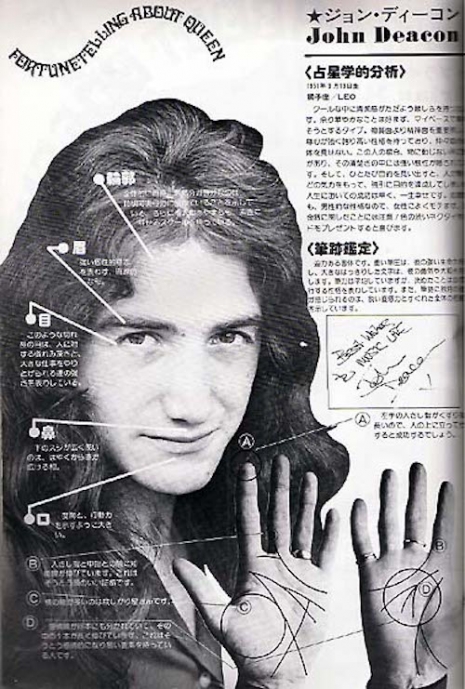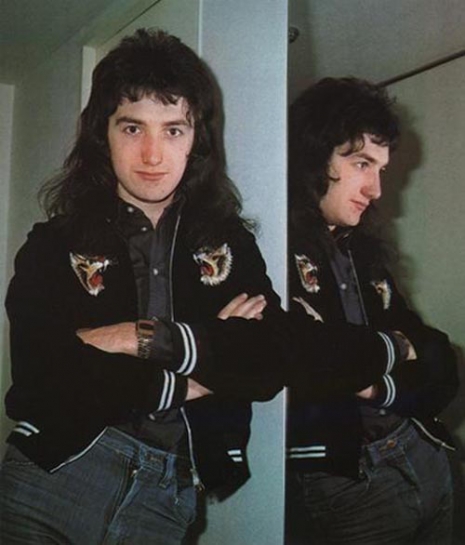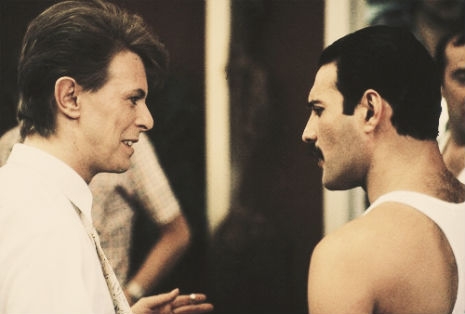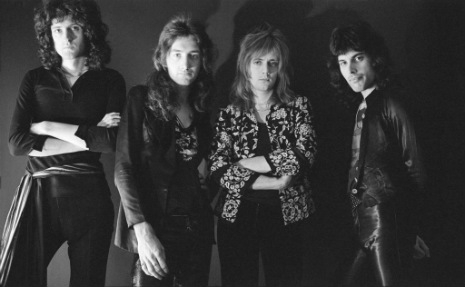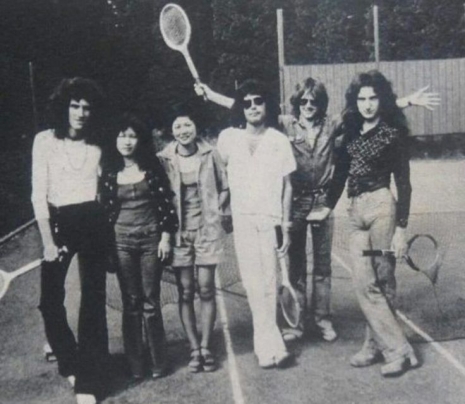
Queen hanging out on the tennis court at Ridge Farm with a couple of gal pals in 1975.
Prior to heading into the studio to record their fourth album, A Night at the Opera, in 1975, Queen would spend time at Ridge Farm rehearsing in a barn. The band was there for around a month, and according to drummer Roger Taylor, they would spend their downtime swimming in the pool on the property, playing tennis and billiards, as well as hitting up The Royal Oak Pub down the road. During their time in the barn, as Taylor recalls, they started to lay the groundwork for their future titanic hit, “Bohemian Rhapsody.” No wonder the barn was quickly converted into an actual working studio later that year—it had been blessed with magical Queen dust.
Frank Andrews, a lighting technician who toured extensively with Queen and The Rolling Stones saw the writing on the wall, so he took on the task of converting the barn (which resided on property owned by his parents) into a studio. Here’s Andrews remembering the summer of 1975 he spent with Queen:
“Queen came here in our first year, as I had toured with them in Europe and Scandinavia. They were relatively unknown at that stage, and that was just at the point where it took off for them. They liked it here as they could all focus on what they were doing, and all live together. There was a family atmosphere, and the band would stroll around and play with the dog we had at the time. Queen played a lot of tennis too, and I remember Freddie, in particular, was very good.”
During its 25-year history, Ridge Farm Studio attracted groups and artists like Thin Lizzy, The Slits, Roxy Music, Peter Gabriel, Echo & the Bunnymen, and The Smiths. Before its next transformation which turned it into a popular wedding venue (as it is to this day), the Joe Jackson Band would be the very last to record material for their 2003 album Volume 4 in the former barn. Now that we have our musical history lesson out of the way for today, let’s get to checking out images of Queen hanging out playing tennis in their bellbottoms and shooting pool at a place which sounds like a summer camp for rock stars. Taylor’s fond memories of Ridge Farm sound a bit like he’s reminiscing about summer camp, doesn’t it? I mean, aside from the trips to the local pub and the lack of a lame archery range, you’d almost expect the boys to be writing home to mum requesting she forward some proper tea and biscuits along with her next letter. Awww. As a bonus, I’ve also slipped in some choice shots of a shirtless Freddie Mercury playing tennis in Ibiza—a place which was like a second home to him during the last decade of his life. Enjoy.

Brian May on the tennis court at Ridge Farm in his bellbottoms.

Roger Taylor strutting around the court in his bellbottoms.

John Deacon looking happy to be on the tennis court in his bellbottoms.
Continues after the jump…






